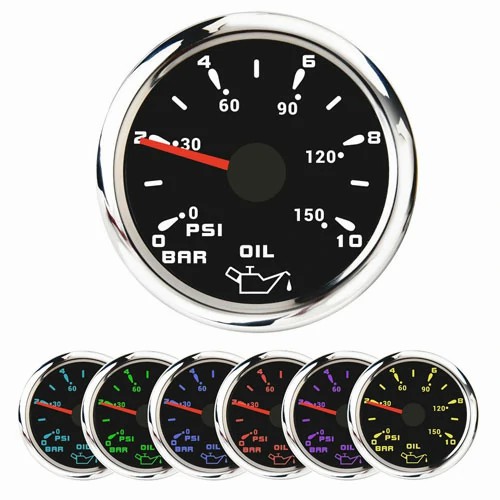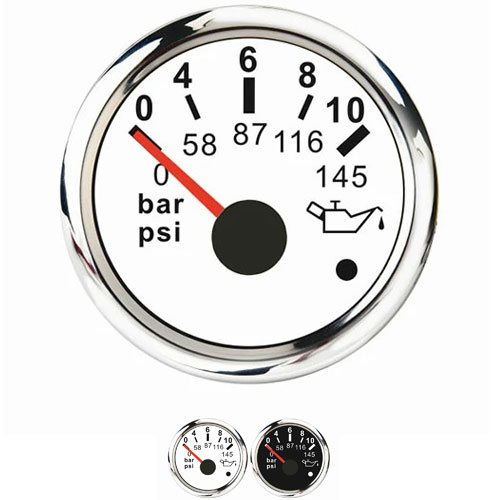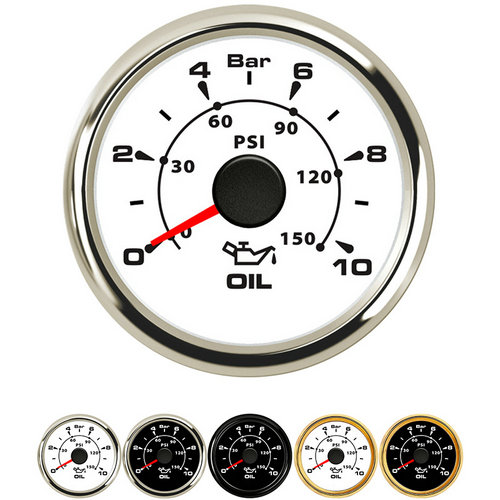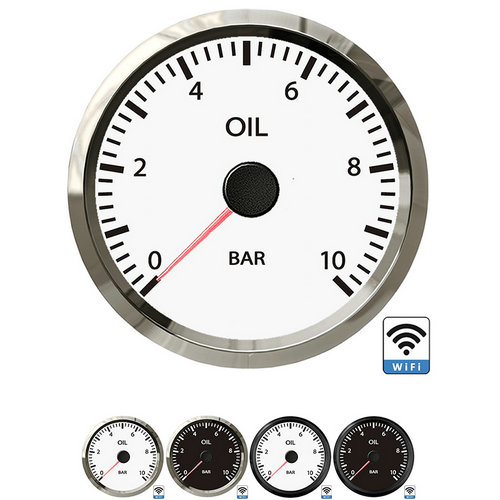how to test oil pressure gauge
1. The engine oil storage is too small, resulting in no oil or less oil in the lubrication system, resulting in low oil pressure. Solution: add oil.
2. Dirty or viscous oil makes the oil pump unable to effectively inhale and pump out the oil, resulting in low or no oil pressure. Solution: Change the oil.
3. The oil is thin or the oil is thin due to the high temperature of the engine, which will leak from the gaps of the friction pairs of the engine, resulting in low oil pressure. Solution: Change the oil or overhaul the cooling system.
4. Oil leakage from the oil pipe, damage to the oil pump or excessive wear of its components will lead to reduced oil intake and pump output, or no amount at all, resulting in low or no oil pressure. Solution: Repair.
5. The clearance between the crankshaft and the large and small tiles exceeds the standard, resulting in oil leakage, resulting in low oil pressure. Solution: Repair.
6. The spring of the pressure limiting valve or the pressure relief valve is too soft, and the function of the valve is lost or weakened due to the damage of the hairpin or the steel ball, resulting in a decrease in the oil pressure. Solution: Replace and repair.
7. Low oil pressure due to oil sensing plug, pressure gauge or circuit failure. Solution: Replace the check.
Use one end of the test light to connect the oil power supply terminal, and the other end for the grounding test. If the test light is bad, it proves that there is an open circuit in the power supply circuit, and if the test light is on, it means that the oil meter itself or the sensor circuit is faulty. The way to troubleshoot is to first turn on the ignition switch, and then remove one end of the wire of the oil pressure sensor for instant grounding. At this time, if the oil pressure gauge suddenly moves from 0 to 0.5Mpa, it means that the oil pressure gauge is not faulty. And remove the sensor and replace the removed wire, and then plug it into the oil hole of the sensor to play the constant pressure diaphragm. At this time, if the pointer of the oil pressure gauge moves, it also means that the sensor is normal. If the above results are the opposite, it means that the sensor is faulty and the oil pressure gauge is faulty. The oil pressure warning light is mainly used to remind two faults, the first is the failure of the main components of the lubrication system or the oil circuit failure, and the second is the low oil pressure or deterioration caused by the engine failure.
 English
English 






Get a Quote / Info